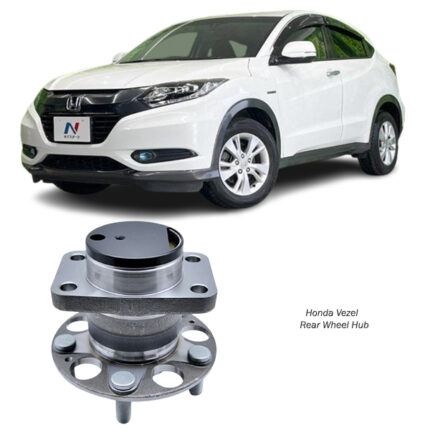-20%
Get Lexus RX350 Power Steering Rack Assy 44200-48080 in Kenya
The Power Steering Rack Assembly, often referred to as the steering rack, is a fundamental component of the vehicle’s steering system. It plays a critical role in converting the driver’s input at the steering wheel into the movement of the wheels, providing ease and precision in steering. In modern vehicles, power-assisted steering racks, whether hydraulic, electric, or electro-hydraulic, enhance control and comfort by reducing the effort required to steer, especially at lower speeds. This article delves into the function, benefits, maintenance, and signs of wear in a power steering rack assembly.
1. What is a Power Steering Rack Assembly?
The power steering rack assembly is part of a rack-and-pinion steering system, which is the most common type found in vehicles today. This system consists of several key parts:
- Steering Rack and Pinion Gear: The rack is a long, toothed metal bar, and the pinion is a small gear that meshes with it. When you turn the steering wheel, the pinion rotates, causing the rack to move laterally. This movement turns the wheels to the left or right.
- Hydraulic or Electric Assistance: In a power steering system, the rack receives assistance from a hydraulic or electric source. Hydraulic systems use pressurized fluid, while electric systems rely on an electric motor. Electro-hydraulic systems combine both for efficiency and precision.
- Tie Rods and Joints: The rack is connected to the wheels via tie rods and ball joints. These parts transmit the movement of the rack to the wheels, allowing them to pivot and turn.
2. How Does the Power Steering Rack Assembly Work?
The power steering rack assembly makes turning the wheels easier by amplifying the force applied to the steering wheel. Here’s a breakdown of how it works:
- Steering Input: When the driver turns the steering wheel, it rotates the pinion gear attached to the steering column.
- Rack Movement: As the pinion turns, it pushes the rack in the direction the driver wants to go. This movement is translated directly to the wheels.
- Power Assistance: In a hydraulic system, a pump (driven by the engine) pressurizes hydraulic fluid and channels it through hoses to the rack. Valves in the rack control fluid flow, creating pressure that assists the driver’s input, making it easier to turn the wheels.
- Electric Assistance: In electric systems, sensors detect the driver’s input, and an electric motor applies additional force to the rack. Electric assistance is often preferred in modern vehicles due to better energy efficiency and adaptability to variable driving conditions.
3. Types of Power Steering Rack Assemblies
There are three main types of power steering rack assemblies:
- Hydraulic Power Steering (HPS): Uses hydraulic fluid pressurized by a pump to assist the steering. These systems provide consistent steering feel but require more energy from the engine.
- Electric Power Steering (EPS): Uses an electric motor to assist steering, reducing energy demands on the engine. EPS systems are lighter, more efficient, and adjustable, making them popular in newer vehicles.
- Electro-Hydraulic Power Steering (EHPS): Combines hydraulic and electric systems, where the hydraulic pump is powered by an electric motor rather than the engine. This setup offers the benefits of hydraulic power steering without the energy drain on the engine.
4. Benefits of a Power Steering Rack Assembly
A power steering rack assembly offers several advantages that improve the driving experience:
- Easier Maneuverability: With power assistance, drivers can steer the vehicle with less effort, especially useful in low-speed situations like parking.
- Enhanced Precision and Control: The system allows for smoother, more precise steering, providing a balanced feel on straight roads and responsiveness in turns.
- Improved Safety: Power steering helps drivers maintain control, especially in emergency situations where quick steering adjustments are necessary.
- Reduced Driver Fatigue: By lowering the effort required to turn the wheel, the system reduces strain on the driver, making long-distance driving more comfortable.
- Adaptability in Variable Conditions: EPS systems, in particular, can adapt to different driving situations, providing increased assistance at low speeds and more controlled feedback at higher speeds.
5. Signs of a Failing Power Steering Rack Assembly
Over time, the power steering rack assembly may develop issues due to wear and tear. Common signs of a failing steering rack include:
- Difficulty Steering: If the steering feels stiff or hard to turn, it may indicate issues with the steering rack or low power steering fluid levels.
- Unusual Noises: Clunking, knocking, or grinding noises while turning may indicate a worn or damaged rack or tie rod ends.
- Leaking Power Steering Fluid: Hydraulic power steering systems use fluid to assist with steering. If you notice fluid leaking around the rack area or under the vehicle, it could indicate a problem.
- Excessive Play in the Steering Wheel: If there’s a loose or “floaty” feel in the steering, it could mean that the steering rack or components such as tie rods have worn out.
- Steering Pulls to One Side: If the vehicle pulls to one side even after an alignment, it could be due to issues within the steering rack assembly.
6. Maintenance Tips for Power Steering Rack Assemblies
Routine maintenance can help extend the life of a power steering rack assembly. Here are some essential tips:
- Regularly Check Power Steering Fluid: For hydraulic systems, check the fluid level and condition regularly. Low fluid levels can damage the pump and rack due to increased friction and heat.
- Use Quality Power Steering Fluid: Always use the fluid recommended by the vehicle manufacturer. Using the wrong fluid can cause the system to perform poorly and may result in premature wear.
- Inspect for Leaks: Check around the steering rack for any signs of fluid leaks. Leaks can lead to steering issues and, if left unattended, can damage the pump and other components.
- Get Regular Wheel Alignments: Misalignment can put undue stress on the steering rack and cause it to wear out faster. Regular wheel alignment ensures even load distribution and helps maintain steering accuracy.
- Inspect and Replace Worn Components: Tie rods, ball joints, and other associated parts should be inspected regularly and replaced as needed. Worn components can compromise the entire steering system and increase wear on the steering rack.
7. Replacement and Repair of Power Steering Rack Assembly
Replacing a power steering rack assembly is often a complex process, involving several steps:
- Diagnosis: A professional mechanic will typically start by inspecting the steering system to confirm if the steering rack is the cause of any issues.
- Remove the Old Rack: The vehicle is lifted, and the wheels, tie rods, and other components connected to the steering rack are removed. The power steering rack is then unbolted from the frame.
- Install the New Rack: A new or refurbished steering rack is installed, and all components are reconnected.
- Fill and Bleed the System: For hydraulic systems, the mechanic will fill the system with fresh power steering fluid and bleed out any air to ensure proper operation.
- Wheel Alignment: After replacement, a wheel alignment is essential to ensure the vehicle tracks correctly and steering components aren’t under stress.
8. Cost of Power Steering Rack Replacement
The cost of replacing a power steering rack assembly varies by vehicle type, labor rates, and whether the rack is hydraulic or electric. Replacement can range from $500 to over $1,500, including parts and labor. In many cases, refurbished racks are available as a cost-effective alternative to new parts. However, always consult with a trusted mechanic to determine the best option based on your vehicle’s requirements.
9. Advantages of Electric Power Steering Racks
In recent years, many manufacturers have moved to electric power steering (EPS) racks due to their advantages:
- Energy Efficiency: Unlike hydraulic systems that constantly run a power steering pump, EPS systems only draw energy when steering input is detected, improving fuel economy.
- Variable Assistance: EPS systems can adjust the level of assistance based on driving speed, enhancing stability and control at different speeds.
- Advanced Features Integration: EPS can easily integrate with other vehicle systems, like lane-keeping assist and parking aids, offering better control and convenience.
Conclusion
The power steering rack assembly is an essential part of a vehicle’s steering system, enabling easier control, enhanced stability, and safer driving. Regular maintenance, prompt attention to warning signs, and periodic inspections can help extend the life of the steering rack and avoid costly repairs. Whether hydraulic or electric, a well-maintained power steering rack assembly ensures a smoother, more responsive driving experience, contributing to both driver comfort and vehicle safety.
Follow us on Facebook for more parts.





